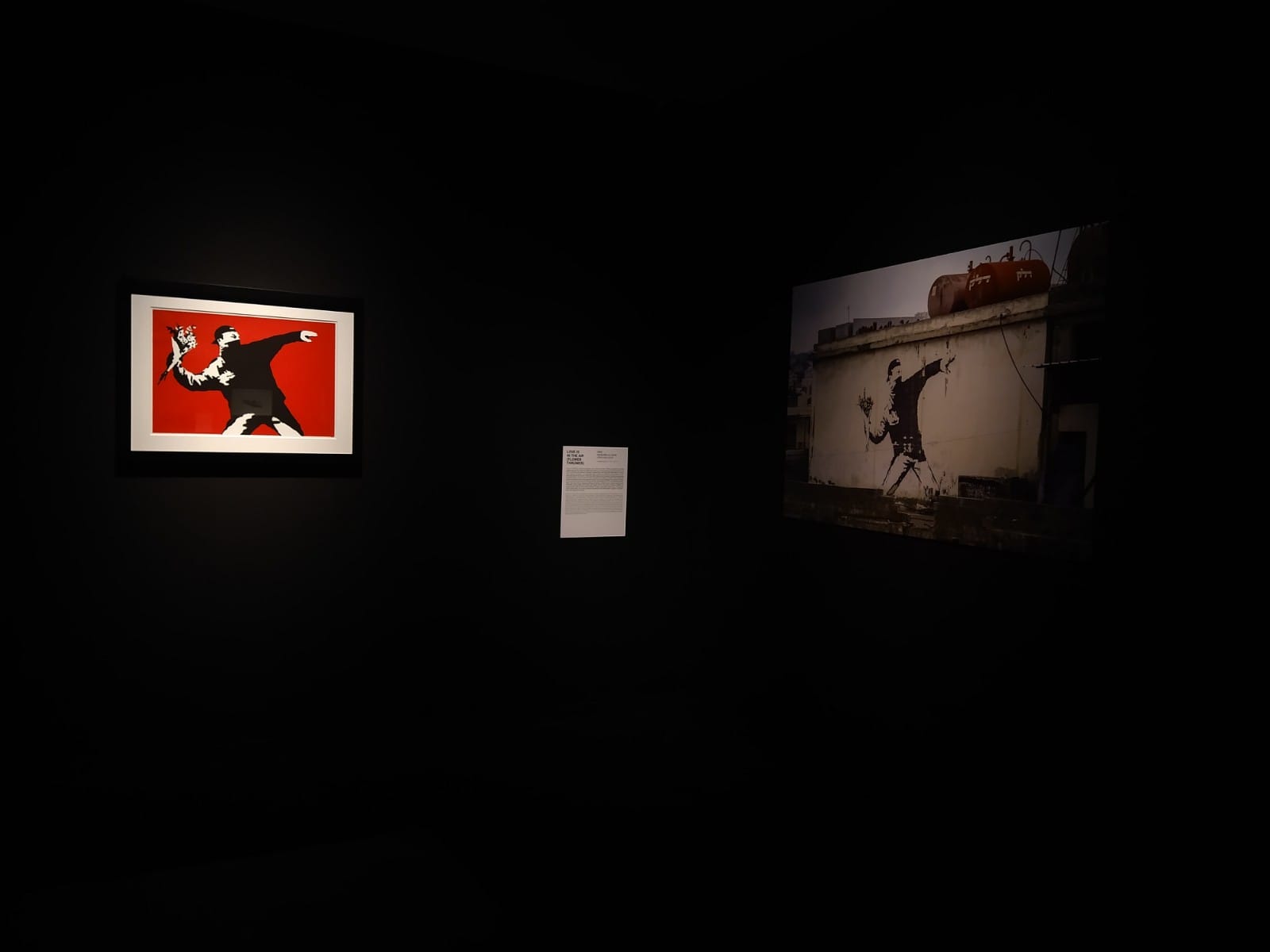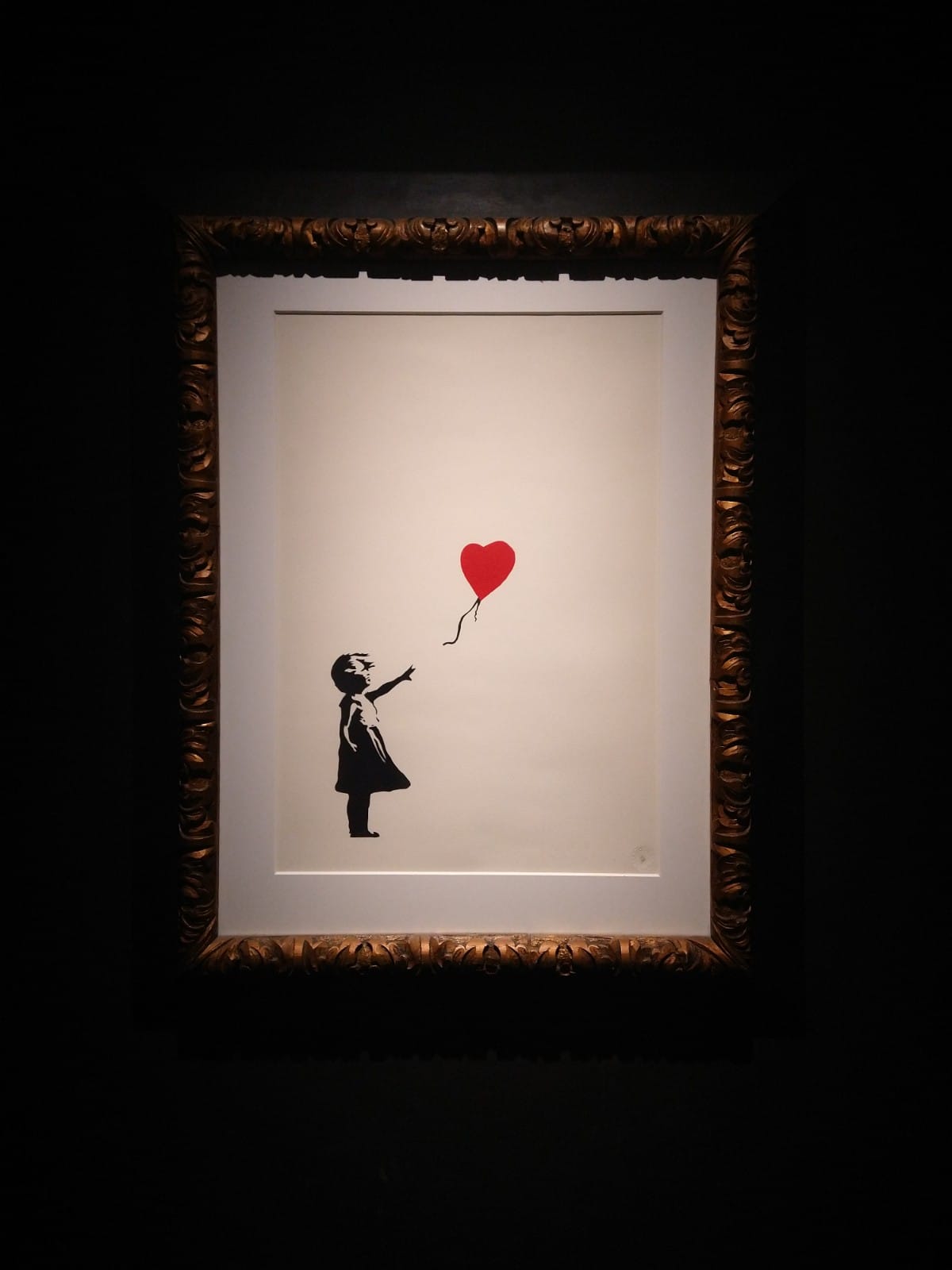It is now pleonastic to discuss the usefulness of yet another Banksy exhibition. Those who would like to go to the Museum of the City of Livorno and spend twelve euros to see an exhibition composed of twenty-six multiples of Banksy, more or less the same ones that are shuttled up and down the national territory every year, do as they see fit. Remembering that six exhibitions on Banksy can currently be visited in Italy, including reviews of multiples, galleries of reproductions and more or less immersive experiences: those who want to see an exhibition on Banksy can choose, as of today, whether to go to Trieste, Turin, Bologna, Genoa, Avellino or, precisely, Livorno. And remembering that the Metamorfosi association, which organized the Livorno exhibition, in just two years has taken the review on the English artist to Teramo, Gallipoli, Trento, Bari, San Marino, Lugano, Reggio Calabria, Chioggia, Parma, Ancona, Otranto, Sarzana, Palermo, Sansepolcro, Ferrara, Genoa, Cagliari, Osimo, and Florence.
Basically, if you haven’t yet happened upon a Banksy exhibition within a fifty-mile radius, it means you probably live on the moon. Livorno therefore welcomes a fusty product that has already been everywhere: the press releases can then quietly insist, as if to justify the operation, that Banksy Capitalist Realism (this is the title of the exhibition) “is not an immersive exhibition of reproductions, but a collection of original works” (which no one doubts), but the fact remains that the Tuscan city has to content itself with coming in as the good last to present an exhibition that is now overcooked, a commercial product, and not even with the same amount of works that have been seen elsewhere (in Parma, for example, there were about a hundred).



 Banksy
BanksyAbout the exhibition, then, there is not much to say. The case of Livorno, however, deserves a separate mention for two reasons. First, the cultural value of the exhibition in relation to the history of the host city. The administration will be able to say that the exhibition was a success because it is likely to break even (anything but an easy goal for an exhibition) and because it moved a few thousand visitors (it will be interesting later to know how many came from outside the city), perhaps also making local merchants happy. It will then be useful to further emphasize that the primary goal of an exhibition should not be the movement of flows of people, because otherwise the organization of exhibitions risks becoming a game of downsides, if stale products or chasing fashions are used to move audiences. Then we might as well have a festival of cacciucco. A city like Livorno can and must surely express better: the main cartel exhibition in the museum deputed to house the civic collections cannot and must not be a box exhibition on Banksy, which also recycles the same phrasing as previous exhibitions. For example, “the Livorno exhibition treats Banksy for the first time as if he were a great classical artist,” an intention that could already be read in the press releases of thecounterpart exhibition at Palazzo delle Albere in Trento. Commercial operations such as Banksy Capitalist Realism can be tolerated in a small town, in a city where there are few opportunities to see exhibitions, in a locality that has little exhibition tradition, or if such an exhibition is entirely incidental, one of many: in a rich and varied billboard it can safely be present even the exhibition-banettone (since it began under Christmas). But in a city like Livorno the Banksy exhibition cannot be the main event. And the courage of a city administration also lies in proposing interesting palimpsests that manage to leave something behind (in terms of novelty, history, research, image return), even in the face of minus signs on the budget. With some of the previous exhibitions (for example, the one on Grubicy) an interesting path had been taken, interrupted with Banksy by an operation totally contrary to what had been done previously.
The second reason, on the other hand, is given by the situation, probably unique in Italy, that has occurred in Livorno, where the public, for months now, has not been allowed to see the works of the permanent collection of the Museo della Città, because the museum, which is barely five years old, is to be refurbished, but its spaces have recently been occupied by no less than two temporary exhibitions, the one on Piero Gilardi and, precisely, the one on Banksy: so what sense does it make to prevent Leghorners and tourists from viewing the works of the city’s contemporary art collection, when it would have been possible instead to display, perhaps on a rotating basis, the works of the public collections with ad hoc, heritage-focused exhibitions, instead of occupying the exhibition spaces with the thousandth exhibition on Banksy? A city that has an artistic tradition like Livorno, an almost unique case in Italy, does not deserve such treatment. It was just a few days ago that the scientific director of the Museo della Città was appointed: the hope is that the Banksy exhibition is just an accident of the way.
Warning: the translation into English of the original Italian article was created using automatic tools. We undertake to review all articles, but we do not guarantee the total absence of inaccuracies in the translation due to the program. You can find the original by clicking on the ITA button. If you find any mistake,please contact us.